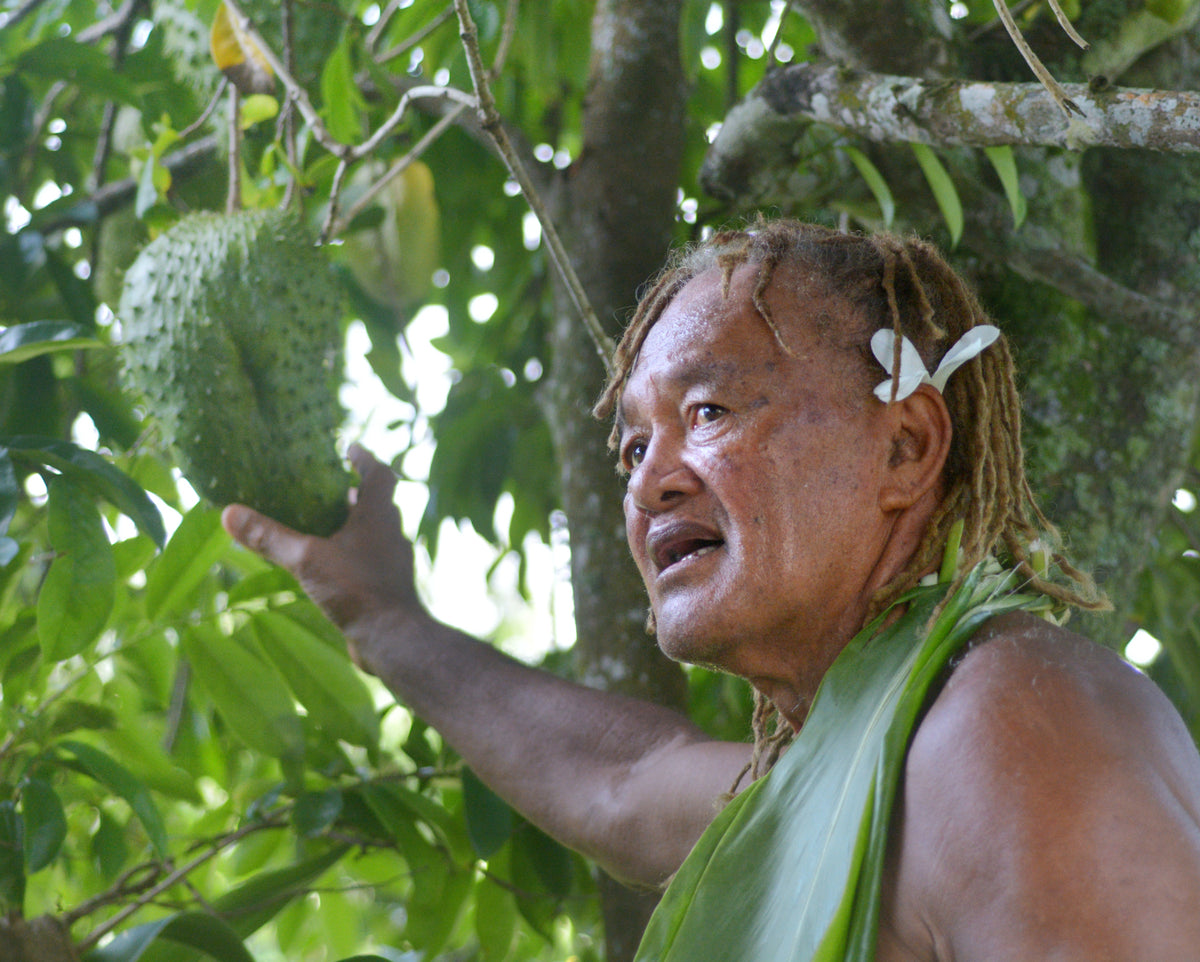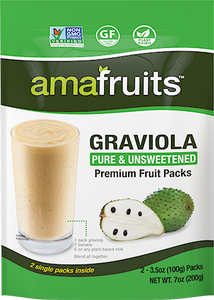Graviola
Sweet and Soursop
Graviola (pronounced grah-vee-oh-la), also known as “soursop”, is an oval, heart-shaped fruit with dark green, prickly skin from the Annona Muricata family that grows throughout the subtropics of Brazil. The flesh of the fruit is a white and creamy pulp with large black seeds. Its taste ranges from tart to semi-sweet and is often compared to a mix of strawberry and pineapple.

Benefits of Graviola
-
Contains a variety of polyphenols and flavonoids, as well as other antioxidants.
-
Includes potassium, nature’s electrolyte.
-
A 100 gram serving of graviola contains over 3 grams of dietary fiber.
-
Immunity supporting plant sterols.



Harvesting Graviola

The Graviola tree belongs to the muricata species of trees, which is classified in the Annona subdivision of the Annonaceae tree family. It is a small evergreen tree with broad leaves that produces large, heart-shaped fruits with delicious creamy pulp on the inside. The trees flourish best in areas with high humidity and warm temperate winters.
Graviola trees typically fruit in the third year and produce year-round in ideal growing conditions.
At Amafruits, we use graviola from small family farmers in the Amazon regions of Brazil, where it is pulped, pureed, and immediately frozen for peak freshness.








